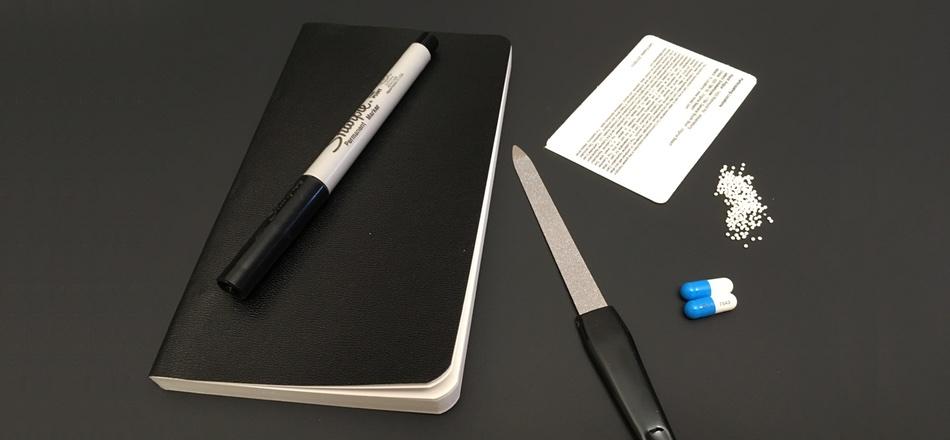Counting Beads from a Beaded Capsule

1. Set a schedule.
Back in Step 14, you decided whether you’d taper using a Daily Microtaper or Cut-and-hold schedule. If it’s been a while since you made that decision, you might want to go back to that step and refresh your memory, because some of the calculations you’ll do in Step 19 will depend on your chosen schedule.
2. Establish a single source for the capsules and/or keep beads from different sources separate.
Due to the different ways that manufacturers formulate pharmaceutical drugs, and the different amounts of active drug and filler in various dosage sizes of the same drug, the layperson withdrawal community has found that it’s important to never mix together beaded capsules from different sources. Many people keep the capsules and beads from one pill bottle together and stored separately from capsules and beads from any other bottle.
3. Determine whether the beads are safe to digest directly.
Some beads are known to cause health problems if consumed directly, and some substances are known to damage beads. For these reasons, most bead-counters in the layperson withdrawal community tend to place their counted beads back into a capsule before consuming them. If considering any other approach, it’s important to do research into these two key issues:
- Confirm with a well-informed pharmacist that direct exposure to the capsule’s beads hasn’t been reported to cause health problems.
- Some suspending vehicles are known to damage beads.
Occasionally, people in the layperson withdrawal community report mixing their beads into a thick suspending vehicle like applesauce or pudding immediately prior to consumption. However, it’s important to do your own research to determine whether there are particular substances that are unsafe to mix your beads with. (For example, it’s been documented that the beads in duloxetine are damaged specifically by chocolate pudding, but not by applesauce.) Again, refer to Step 11 to find where information about this should be located in your drug label, and then confirm your findings with a pharmacist as well.
4. Consult a pharmacist about storing loose beads.
Many people in the lay withdrawal community choose to save the loose, extra beads that they’ve cut from their dose in order to use them later. It’s important to first check with a well-informed pharmacist to make sure this is safe to do, and if it is safe, how to properly store loose beads.
In this section
- Step 10- Get Informed About Your Psychiatric Drug
- Step 11- Ensuring that a Drug is Relatively ‘Taper-friendly’
- Step 12- Interactions, Reactions and Sensitivities
- Step 13- Taper Rates
- Step 14- Taper Schedules
- Step 15- Taper Methods
-
Step 16- Preparatory Decisions
- Making a Liquid Mixture Using Immediate-release Tablets or Capsules
- Using a Digital Scale to Weigh Powder from a Crushed Immediate-release Tablet or Poured-out Powder or Beads from a Capsule
- Counting Beads from a Beaded Capsule
- Using a Compounding Pharmacy to Obtain Capsules and/or Liquid
- Using a Manufacturer’s Oral Liquid
- Step 17- Gather the Gear
- Step 18- Essential Skills
- Step 19- Setting Up a Taper Journal
- Step 20- Implementing a Taper
TWP’s Companion Guide to Psychiatric Drug Withdrawal Part 2: Taper